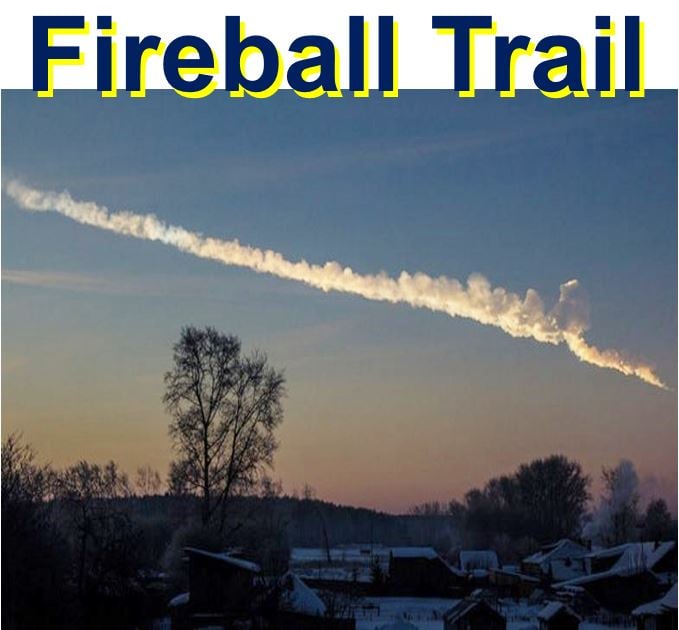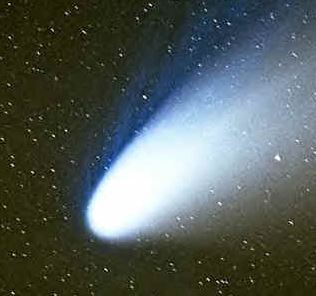A fireball exploded over the Atlantic Ocean with the force of 13000 tons of TNT, making it the most powerful event since the Chelyabinsk blast in Russia in February 2013. As the explosion occurred far from land, 620 miles off the coast of Brazil, hardly anybody noticed it.
Compared to other celestial objects that have crashed into our planet, this was a very minor one, say scientists, and nothing to worry about.
The explosion, which occurred 30 kilometres (18.6 miles) above the ocean, would have rattled some windows and frightened people had it taken place over a densely-populated area, but it would not have caused any significant damage.
 The Chelyabinsk meteor was a superbolide caused by an asteroid that entered our atmosphere over Russia on 15 February 2013 with a speed of 19.16 kilometres per second (69,000 km/h or 42,900 mph). The explosion generated a bright flash, producing a hot cloud of dust. The explosion released 20 to 30 times more energy than what was released from the Hiroshima atomic bomb in WWII. (Image: European Space Agency)
The Chelyabinsk meteor was a superbolide caused by an asteroid that entered our atmosphere over Russia on 15 February 2013 with a speed of 19.16 kilometres per second (69,000 km/h or 42,900 mph). The explosion generated a bright flash, producing a hot cloud of dust. The explosion released 20 to 30 times more energy than what was released from the Hiroshima atomic bomb in WWII. (Image: European Space Agency)
The Chelyabinsk explosion, on the other hand, was powerful enough to cause serious damage to 7,000 buildings and injure more than 1,000 residents, mainly from flying glass. That one was forty times more powerful – 500,000 tons of TNT – than the explosion earlier this month.
The latest explosion was reported on NASA’s Near Earth Object Program page, which lists reports of fireballs and *bolides.
According to NASA, a fireball is an abnormally bright meteor that reaches a visual magnitude of at least -3. Most objects causing fireball events are generally at least one metre in size. Fireballs that explode in our atmosphere are technically referred to as bolides, although the two terms – fireballs and bolides – are commonly used interchangeably.
This latest fireball was about seven metres (23 feet) wide and entered our atmosphere at 41,600 mph (66,948 km/h).
 The fireball over the Atlantic was was registered by NASA (red box). (Image: neo.jpl.nasa.gov)
The fireball over the Atlantic was was registered by NASA (red box). (Image: neo.jpl.nasa.gov)
How many meteors hit Earth each year?
Writing in ‘Ask an Astronomer’ on a Cornell University web page, astronomer Linda Carter says it is hard to know exactly how many meteors hit the surface of our planet each year. Most flashes we see in the sky are caused by pea-sized pieces of rock, of which there are many in the Solar System.
Estimates for the mass of material that falls on Earth annually range from 37,000 to 78,000 tons. Most of this would come from dust-sized particles.
A 1996 study, which looked at how many meteorites were found in deserts over time, estimated that for objects weighing between 10 grams and 1 kg, between 2,900 and 7,300 kg hit Earth annually. This total did not include small dust particles.
The same study also calculated that from 36 to 166 meteorites weighing more than 10 grams fall to Earth per million square kilometres annually.
This translates to between 18,000 and 84,000 meteorites larger than 10 grams hitting our planet each year.
The vast majority of meteorites are too small to hit the land or sea – they burn up completely in the atmosphere.
Atomic bombs to deal with killer asteroids
The EU Commission has tasked a group of Russian researchers to investigate whether atomic bombs could be used to target killer asteroids – dangerous asteroids that might hit Earth and cause serious damage, including loss of life.
The aim would be to detonate a nuclear bomb next to or on an asteroid so that its outer layers would evaporate, thus changing mass, which would hopefully send it on a non-Earth-bound trajectory.
The NEOShield project (Near Earth Object Shield), a collaboration involving research institutions, governments and companies from across the world, was granted European Union funding in 2014 to investigate ways to stop NEOs from hitting us, using space-based deflection technologies.
NASA defines NEOs (near Earth objects) as comets and asteroids that have been nudged by the gravitation attraction of celestial objects (planets) into orbits that send them into our neighbourhood.
Thousands of near Earth objects have been discovered over the past ten years. The risk of us being hit by a killer asteroid one day is a real one.
Video – NASA reports fireball crashing over Atlantic

